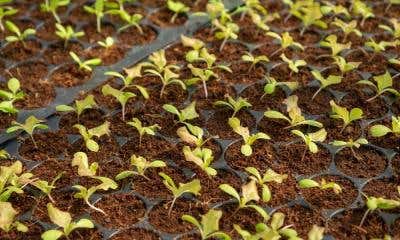Temperature and Cannabis Flowering
-
Induction of Flowering: Cannabis plants initiate the flowering stage when exposed to specific temperature ranges. Generally, a drop in temperature during the night, combined with a warmer daytime temperature, triggers the transition from vegetative growth to flowering.
-
Flowering Stage Temperature: During the flowering stage, maintaining the right temperature is crucial for healthy bud development and optimal resin production. The ideal temperature range for most cannabis strains during flowering is around 20-26°C (68-79°F) during the day and slightly cooler at night.
-
Temperature Fluctuations: Sudden temperature fluctuations during flowering can cause stress and disrupt the development of buds. It is important to minimize temperature swings and provide a stable environment to ensure consistent bud growth and resin production.
-
Cooler Temperatures and Resin Production: Some growers employ cooler temperatures towards the end of the flowering stage to enhance resin production. Lowering the temperature during the final weeks can promote the accumulation of cannabinoids and terpenes, leading to more potent and aromatic buds.
Temperature and Harvest Timing
-
Ripening and Maturation: Temperature influences the ripening and maturation process of cannabis flowers. Cooler temperatures near the end of flowering can prolong the maturation period, allowing for further development of cannabinoids and terpenes.
-
Harvest Timing: Timing the harvest correctly is crucial for obtaining desired cannabinoid profiles and avoiding premature or delayed harvest. Temperature plays a role in determining when the plants are ready for harvest. Cooler temperatures may slow down the ripening process, while warmer temperatures can accelerate it.
Optimizing Temperature for Flowering and Harvest
-
Temperature Control Systems: Utilize temperature control systems, such as heaters, air conditioning, or fans, to maintain a consistent temperature throughout the flowering and harvest stages. These systems help ensure optimal conditions for bud development and resin production.
-
Monitoring and Adjusting: Regularly monitor temperature levels using thermometers and adjust environmental conditions as needed. Maintain a temperature log to track fluctuations and make informed decisions regarding temperature management.
-
Ventilation and Airflow: Proper ventilation and airflow are essential for temperature regulation. Ensure adequate air exchange within the grow space to prevent heat buildup and maintain a fresh supply of CO2 for photosynthesis.
-
Insulation and Environmental Controls: Insulate the grow space to buffer temperature fluctuations and create a more stable environment. Use environmental controls, such as curtains or reflective materials, to manage light and temperature levels effectively.
-
Strain-Specific Considerations: Different cannabis strains may have varying temperature preferences during flowering and harvest. Understand the temperature requirements of the specific strains being cultivated and adjust environmental conditions accordingly.
Temperature significantly impacts the flowering and harvest stages of cannabis cultivation. By understanding the influence of temperature on bud development, resin production, and harvest timing, growers can implement appropriate temperature control measures to optimize their yields and achieve desired cannabinoid profiles. Maintaining a consistent and suitable temperature range throughout these stages ensures healthy plant development, enhances resin production, and ultimately leads to high-quality cannabis harvests.
















